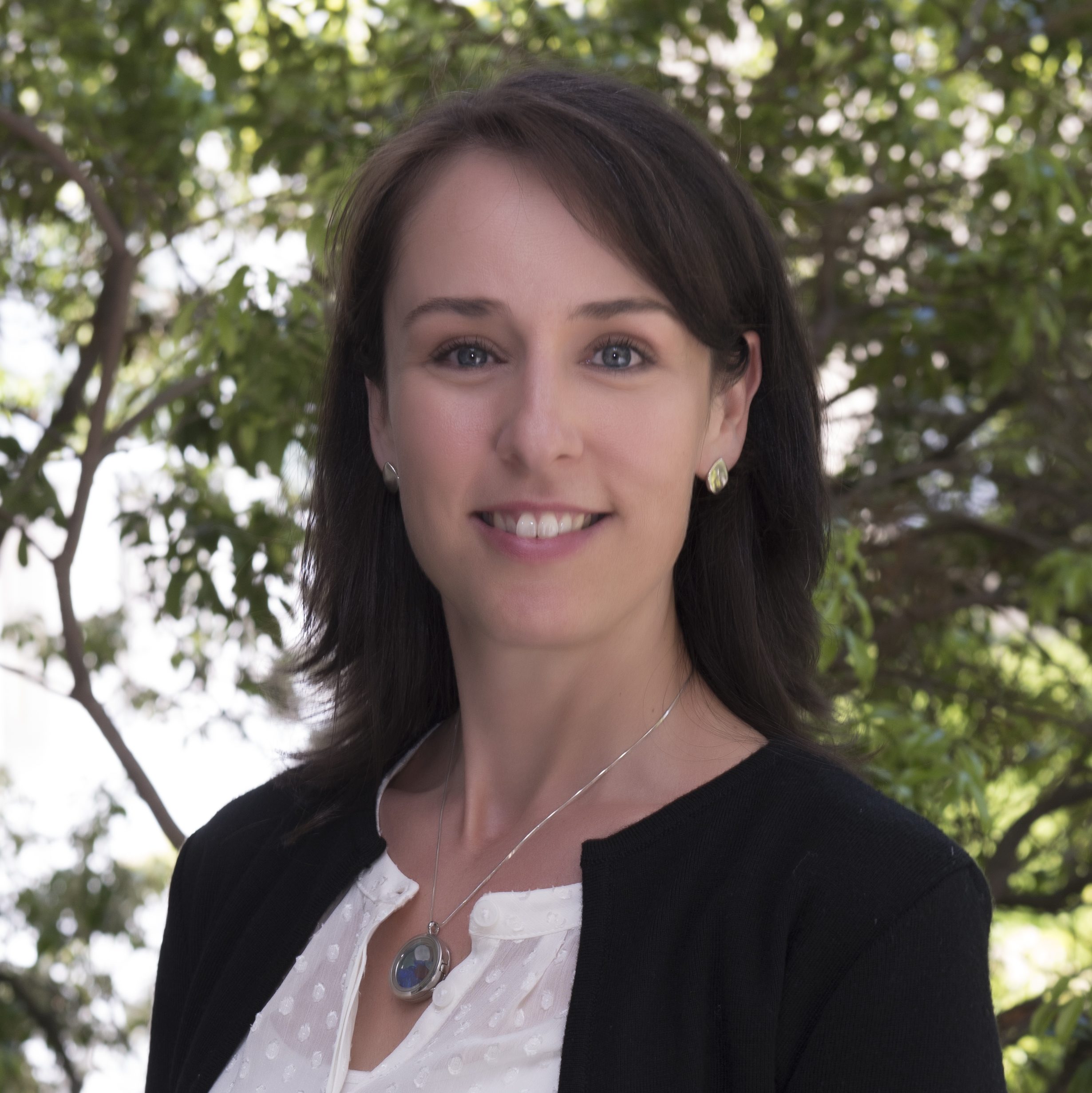
Dr. Pollock will serve as course coordinator of RHSC 420 (Neuroscience) and build up her teaching commitment in that course over the next few years. She also contributes to teaching in PHTH 517 and 544.
Dr. Courtney Pollock was recently appointed as an Assistant Professor in July 2018. She trained as a physiotherapist at McMaster University and worked clinically for over 10 years prior to transitioning to full-time research, this experience informs her research. Dr. Pollock earned a MSc at the University of Western Ontario, a PhD in Rehabilitation Science at UBC and completed post-doctoral studies at Simon Fraser University. Throughout her training, she was supported by several competitive awards from major agencies including the Canadian Institutes of Health Research and the Heart and Stroke Foundation of Canada.
Dr. Pollock’s research aims to: 1) comprehensively understand the fundamental mechanisms of motor control of walking balance and balance reactions and, 2) understand how neurological changes associated with aging, disease and injury impact these aspects of motor control and mobility. The overarching goal of her research is to advance rehabilitation practice by development and evaluation of innovative therapeutic interventions designed with sufficient levels of challenge to optimize the motor control of independent mobility.
Dr. Pollock’s lab is located at GF Strong Rehabilitation Centre. She is accepting students interested in pursuing MSc and PhD degrees through the UBC Rehabilitation Sciences Graduate Program. Work in the Mobility and Balance Rehabilitation Lab will immerse students in a highly collaborative research environment addressing questions related to fundamental motor control of balance and clinically driven questions addressing balance impairment and mobility.
1. Daligadu J*, Pollock CL, Carlaw K*, Chin M*, Haynes A*, Thevaraajah Kopal T*, Walters K, Colella TJF. Validation of the Fitbit Flex in acute post cardiac surgery patients. Physiotherapy Canada, in press.
2. Garland SJ, Gallina A, Pollock CL, Ivanova TD. Effect of standing posture on inhibitory postsynaptic potentials in gastrocnemius motoneurons. Journal of Neurophysiology, doi: 10.1152/jn.00555.2017. [Epub ahead of print], 2018.
3. Pollock CL, Carpenter MG, Hunt MA, Gallina A, Vieira TM, Ivanova TD, Garland SJ. Physiological arousal accompanying postural responses to external perturbations after stroke. Clinical Neurophysiology, 128(6):935-944, 2017.
4. Miller KJ, Pollock CL, Bower B, Garland SJ. Use of Rasch analysis to evaluate and refine the CB&M for use in community-dwelling adults following stroke. Physical Therapy, 96(10):1648-1657, 2016.
5. Gallina A, Pollock CL, Vieira TMM, Ivanova TD, Garland SJ. Between-day reliability of triceps surae responses to standing perturbations in people post-stroke and healthy controls: an investigation with high-density surface EMG. Gait and Posture, 44:103-109, 2016.
6. Gray VL, Pollock CL, Wakeling JM, Ivanova TD, Garland SJ. Patterns of muscle coordination during stepping responses post-stroke. Journal of Electromyography and Kinesiology, 25(6):959-965, 2015.
7. Pollock CL, Ivanova TD, Hunt MA, Garland SJ. Behaviour of medial gastrocnemius motor units during postural reactions to external perturbations after stroke. Clinical Neurophysiology 126(10):1951-1958, 2015.
8. Garland SJ, Pollock CL, Ivanova TD. Could motor unit control be partially preserved after stroke? Front. Hum. Neurosci. 8:864, 2014.
9. Miller KJ, Hunt MA, Pollock CL, Bryant D, Garland SJ. Does Fast muscle Activation and Stepping Training (FAST) commenced within 6 months following stroke result in improved balance and mobility compared to an active control physiotherapy intervention? Study protocol for a randomized controlled trial. BMC Neurology 14:187, 2014.
10. Pollock CL, Ivanova TD, Hunt MA, Garland SJ. Motor unit recruitment and firing rate in medial gastrocnemius muscles during external perturbations in standing in humans. Journal of Neurophysiology 112(7): 1678-1684, 2014.
11. Pollock CL, Boyd LA, Hunt MA, Garland SJ. Use of the Challenge Point Framework to guide motor learning of stepping reactions for improved balance control in people with stroke: a case series. Physical Therapy 94(4):562-70, 2014.
12. Ivanova TD, Knorr S, MacDonell CW, Pollock CL, Garland SJ. Motoneurone afterhyperpolarisation time-course following stroke. Clinical Neurophysiology 125(3):544-551, 2014.
13. Takacs J, Pollock CL, Guenther J, Napier C, Bahar M, Hunt MA. Validation of the Fitbit One activity monitor device during treadmill walking. Journal of Science and Medicine in Sport, 17(5):496-500 2014.
14. Hunt MA, Pollock CL, Kraus VB, Saxne T, Peters S, Huebner JL, Sayre EC, Cibere J. Relationships amongst osteoarthritis biomarkers, dynamic knee joint load, and exercise: results from a randomized controlled pilot study. BMC musculoskeletal disorders 14(115):1-8, 2013.
15. Newman BL*, Pollock CL, Hunt MA. Reliability of Maximal Isometric Lateral Trunk Flexion Strength Measurement in Athletes Using Hand-held Dynamometry. Journal of Sport Rehabilitation 6:1‐5, 2012.
16. Smoljanovic T, Bojanic I, Pollock CL, Radonic R. Rib stress fracture in a male adaptive rower from the arms and shoulders sport class: case report. Croatian Medical Journal 52(5): 644-647, 2011.
17. Pollock CL, Eng JJ, Garland SJ. Clinical measurement of walking balance in people post-stroke: A systematic review. Clinical Rehabilitation, 25(8):693-708, 2011.
18. Hunt MA, Zabukovec JR, Peters S, Pollock CL, Linsdell MA, and Boyd LA. Reduced quadriceps motor evoked potentials in an individual with unilateral knee osteoarthritis: Case report. Case Reports in Rheumatology, Article ID 537420, 2011.
19. Pollock CL, Jenkyn T, Jones I, Ivanova T, Garland SJ. Changes in Kinematics and Trunk EMG in a 2000m race Simulation in Elite Female Rowers. Scandinavian Journal of Medicine and Science in Sports Epub prior to print, 2010, print 22(4):478-87, 2012.
20. Pollock CL, Jenkyn T, Jones I, Ivanova T, Garland SJ. Electromyography and Kinematics of the Trunk during the Rowing Stroke in Elite Female Rowers. Medicine and Science in Sport and Exercise 41(3): 628-636, 2009.
Dr. Pollock is very involved in, and has served on numerous committees, related to sports and adaptive participation:
Canadian Physiotherapy Association, Congress Abstract Review Committee, 2015-2018
International Paralympic Committee, International Para-Alpine Classifier, 2009-date
World Snowboard Federation, Para-Snowboard Sport Technical Committee, Developed sport for entry into the 2014 Sochi Paralympic Games, 2008
Fédération Internationale des Sociétés d’Aviron, International Rowing Classifier 2006-date
Athletics Canada, National Athletics Classifier, 2006-date
Canadian Paralympic Committee, Athlete Classification National Task-force, 2009-2012
Sport Physiotherapy Canada National Executive, Clinical Newsletter Committee, 2006- 2008